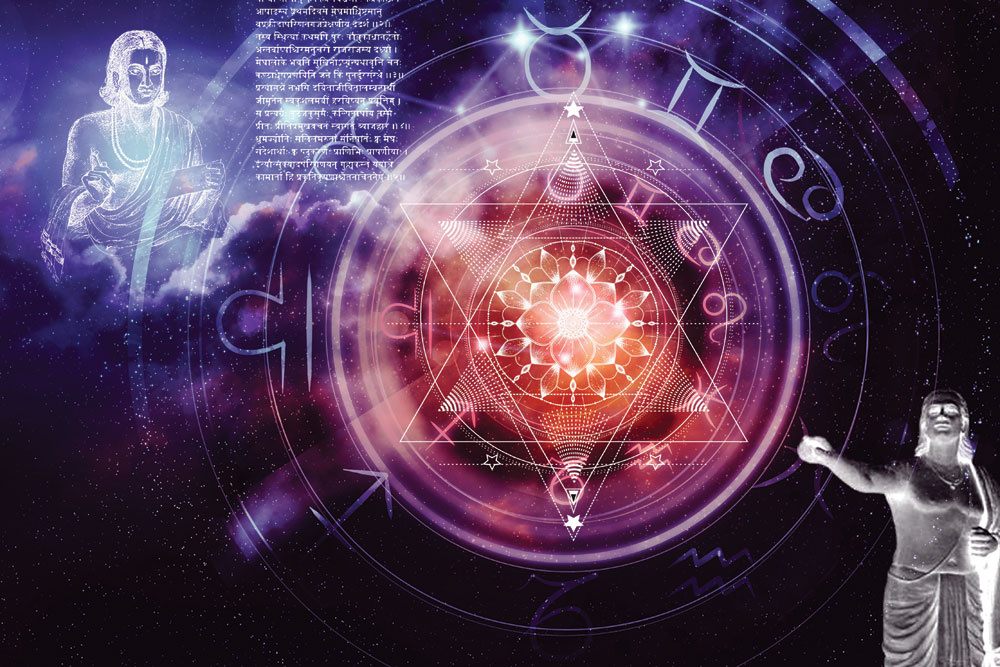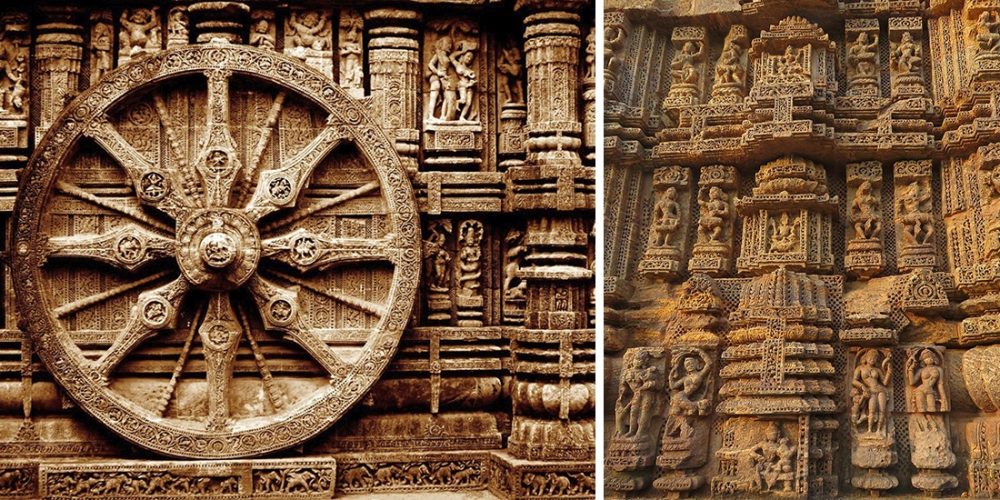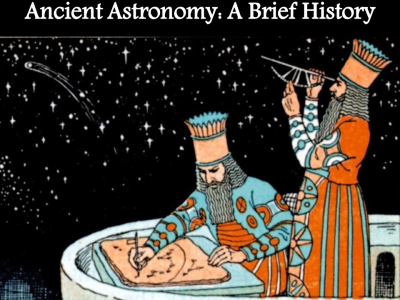
Ancient Indian Astronomy
India has been known for its traditions, culture, and mythology. There are misconceptions about Indian culture that it revolves around astrology and mythological stories mostly. But from the beginning, Indian culture has always been about astronomy.
Ancient Indian Astronomy (Image Credits: Daily Mirror)
It is just that our generation took time to decode the astronomy behind mythological stories. Ancient Indians observed the sky and documented it. They collected all the documents of positioning planets, stars, moon, and their rotations. On this basis, ancient astronomers and mathematicians calculated the circumference of the earth and the path of planets. Thus, it made navigation easy.
They kept records of seasons and changes in sky changes. They calculated and created two different calendars, the lunar calendar, and the solar calendar. The calendars made by ancient Indians are so accurate that they use predict lunar and solar eclipses too. They name constellations and divided them into 27 nakshatras (stars and constellations), then subdivided into 12 Rashi.
Decoding the ancient Indian astronomy from mythology
Ancient Indians encoded astronomical information into mythological stories. So, it can be passed on from one generation to another generation easily. They made up such stories to gain the attention of people and divert their interest towards astronomy.

An Illustration of Ancient Astronomy (Image Credits: Open Magazine)
In these stories, there is mention of the path of planets, constellations as a warrior, and how celestial bodies were formed. One of the famous stories of the sun and his wife shows resembles the celestial bodies. The story has been created beautifully by comparing human nature and emotions to that of celestial bodies properties.
In this story, the sun gets married to Sanjana (Saranya), daughter of Vishwakarma. Sanjana loved her husband the sun dearly but was constantly bothered because of his enchanting heat and brightness, due to which she was unable to look into his eyes with grace.
So she decided to go far away from the sun without his knowledge. She replaced herself with chaya (the shadow) and went. The sun was not aware of this replacement, so lived with chaya happily. The sun and chaya got blessed with a son named Shani (Saturn) and a daughter tapi. But as time went by, the sun came to know about this replacement of this wife.
He went to this wife Sanjana and apologise for not understanding her and divided himself into seven parts. So his brightness got divided into parts and reduce heat. Later on, that seven parts turns out to be seven planets, and his son Saturn was placed in between those planets. Here in this mythological story, the celestial bodies and their formation.
In great Mahabharata, the Orion was a warrior with a six-headed son of lord shiva known as Skanda. Skanda was the god of war and the general of the gods. Skanda uses to ride a red-crested peacock and blowing terrifying sounds all over. Skanda thrust his spear into the white mountain. The top of the mountain split off into the sky and formed Milkyway.

The Ursa Major Constellation (Image Credits: In-the-sky.org)
In another mythological story about Ursa major and the Pleiades, the cup-shaped Ursa major, formed by seven central stars, referred to as Saptarushi (sapta means seven and rushi, means sagas). They were given a place in the sky by god.
All these stories enveloped astronomy inside. We only need a wide perspective to decode and get a peek in past (ancient Indian astronomy). These ancient people made stories to pass on astronomy and various structures, architectural monuments, gigantic sundial, and observatory. All these gigantic structure shows there passion about astronomy and their stone plates or marbles.
These plates are getting restored one by one and reveling the wisdom of astronomy. All these gigantic observatories and sundials have their accuracy. The calculations are so correct that we can still see the accurate time on these sundials.
In India, there are various places in which this astronomical site is located to give us an eyeshot of the ancient perspective of astronomy and its learning methods.
Some astronomical heritage site are as follow:-
Buzahom (Kashmir)
Buzahom is the most ancient settlement remaining discovered in Kashmir. Buzahom is located near Srinagar. This settlement range from 8000 BC TO 1000BC and from the neolithic period to the ancient periods. Buzaham was discovered in 1935, and the excavations have been done in three stages. First, the neolithic period corresponds to the later period, the neolithic period to the middle period, and the neolithic period to the earliest period.

Extending Kashmiriyat to Embrace Burzahom (Image Credits: The Economic Times)
Mudumal (Telangana)

Mudumal, Telangana (Image Credits: Chai Bisket)
The squarish stone planted vertically has the depiction of the cup-mark of Ursa major. There are some 30 cup-marks were arranged in a pattern similar to Ursa major. There are prominent seven stars, and a peripheral group of stars is depicted.
Mudumal consists of 80 big menhirs, which are 12 to 14 feet long and about 2000 stones in alignment, about 1 to 2 feet. Mudumal spread out in 80 acres of land consists of these menhirs, alignments, and stone circles.
Surya Mandir (Konark)
Surya Mandir is located in Konark. It was built in the 13th century. Konark is considered a holy place in Odisha due to this Surya mandir, one of the magnificent architecture in India. A wonder is dedicated to the lord the sun. The building is a chariot of lord sun with a significant bland of culture, architecture, and astronomy.

The Konark Sun Temple (Image Credits: Curiosmos)
The temple’s construction is so that the first ray of the sun is held on the sun gold throne through the gates. The ray of the sun passed from the door of the temple. The door of the temple is built in such a way that sunray can pass through it in all seasons.
As the latitude of Konark, the vertical sundial is designed according to that particular way. The exact time is shown by the shadow made by the sundial. Till the 14th century, the mechanical clock was not invented. So sundial was the best way to address time.
Stone circle (Junapani)
There is about 150 prehistoric megalithic circle in this region. In 1878, these stone circles were discovered. In these stone circles, two circles had unearthed, remaining with funerary objects. With these circles, some animal skeleton was found, and the skeleton was from the horse family.

Stone circles of Junapani (Image Credits: Mapio.net)
To represent astronomical significance, some stone circles are cup-marked. These marks are few centimeters long and oriented towards the sky, creating a definite angle in the north direction. The study shows that it indicates the stellar orientation and changes in different seasons.
Jantar Mantar ( Jaipur, New Delhi, Matura, Ujjain, and Varanasi)
Jantar Mantar consists of an equinoctial sundial, gigantic triangular gnomon with the hypotenuse parallel to the earth’s axis. In the 18th century, between the period of 1724 to 1735, all the five Jantar Mantar were constructed by Maharaja Jai Singh. He was very fond of maths, architecture, and astronomy.
Jantar Mantar, Jaipur (Image Credit: wikipedia.org)
Jantar Mantar consists of 19 astronomical instruments, in which each instrument deduces certain astronomical implications. All these astronomical instruments are made of marbles, stone, and brass. In all five observatories of Jantar Mantar, Jaipur holds the largest observatory, and it is also the world’s largest sundial. At present, only four are in place. The Jantar Mantar of Mathura went down in revolt of 1857.
The gigantic structures are living proof of how curious and passionate their mind was to know things. Indian mythological stories are not just stories. They have astronomical knowledge encoded in them so they can easily pass it on to the next generations. We can learn from this knowledge and enhance our future.
Suggested Reading: Ancient Astronomy: A Brief History
Author








[…] Suggested Reading: Ancient Indian Astronomy and Heritage Sites […]